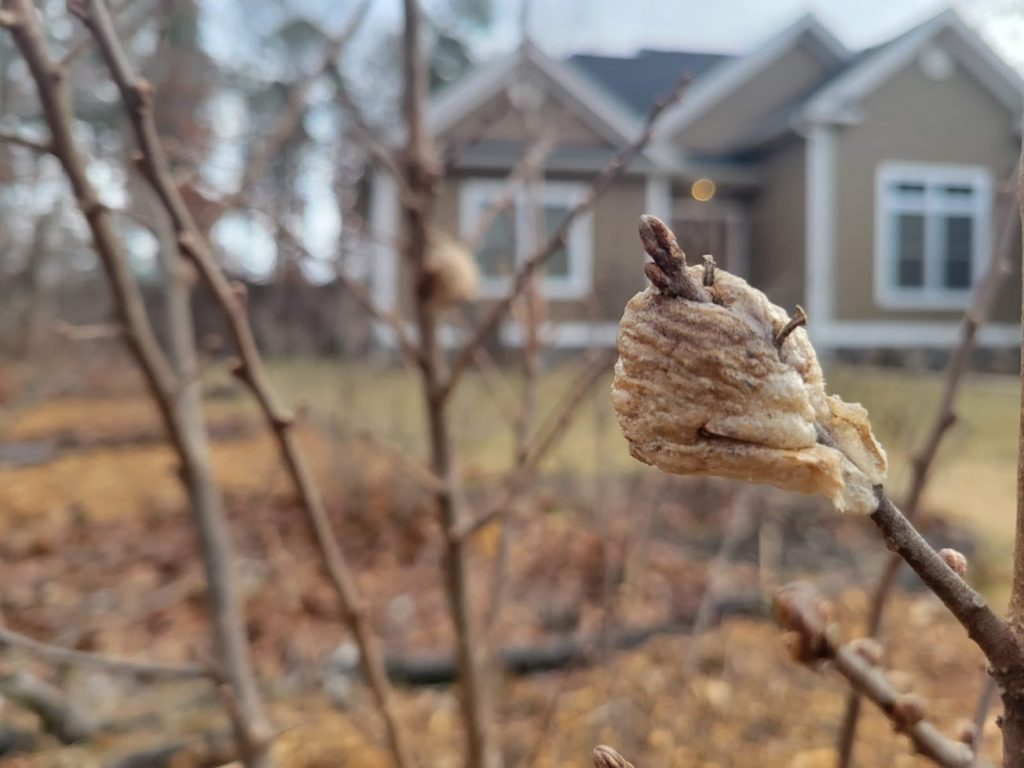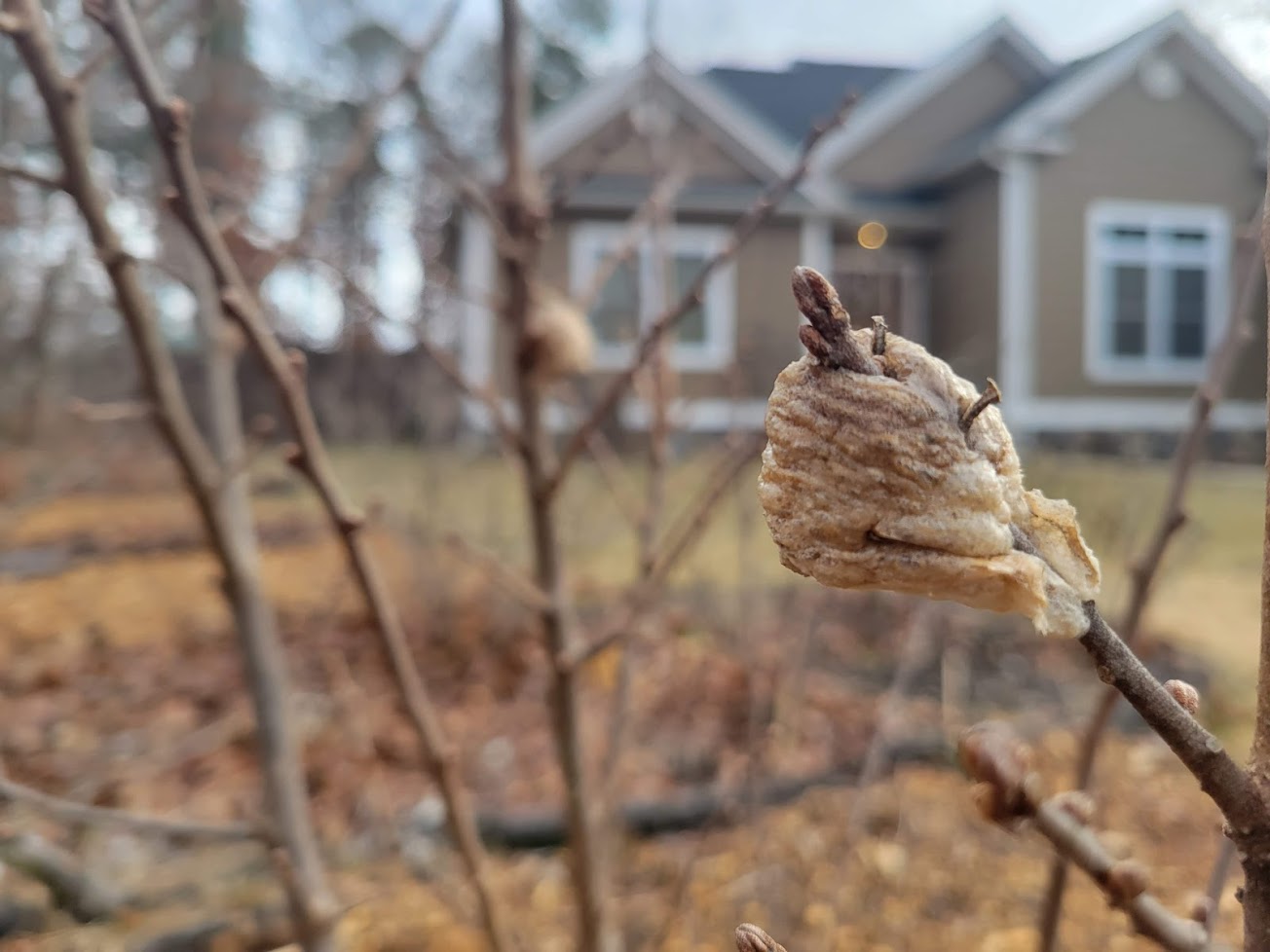
This is a Chinese praying mantis nest – This egg case is also called an ootheca. Adult praying mantis create these in the late fall, right before winter and each nest contains as many as 400 baby praying mantis eggs.
I have lots of these in my yard right now.
I have an unpopular opinion about these guys – I leave them alone and I don’t destroy them.
These are Chinese praying mantis – not the native Carolina mantis. They are considered invasive by many and are bigger and tend to out compete our native mantis.
People also get bent out of shape because praying mantis are ferocious hunters and they don’t discriminate. They are predators and, like lions, who will eat many different species of prey… so will the praying mantis.
So yes, along with some fruit tree loving moths and other crop damaging insects, praying mantis will also chow down on bees, butterflies and the occasional hummingbird (so I’ve heard).
Again, I don’t destroy these nests because by the time the weather warms up in the spring, most of the ones I’ve been watching on my plants through the winter have been taken before the babies get a chance to hatch…
Unlike lions – praying mantis are not near the top of the food chain. So these nests become food for some critters. They are most likely being eaten by birds, but last year I found broken branches where many of the egg cases used to be in the trees and shrubs in my garden. This tells me some other neighborhood creatures might have figured out these things are tasty.
Whether the animals are birds or mammals – by the time it gets warm outside in spring there are usually only 2 or 3 egg cases left.
So the praying mantis egg cases in my yard either become food for wildlife or they hatch out bugs that protect my plants – either way, both of these functions fit with what I want to happen within the habitat I manage – so I never destroy them. I’d rather partner with the praying mantis for a chemical free pest control solution than spray my food with toxic stuff that could affect the health of my family and the life of my soil.
Happy gardening!

